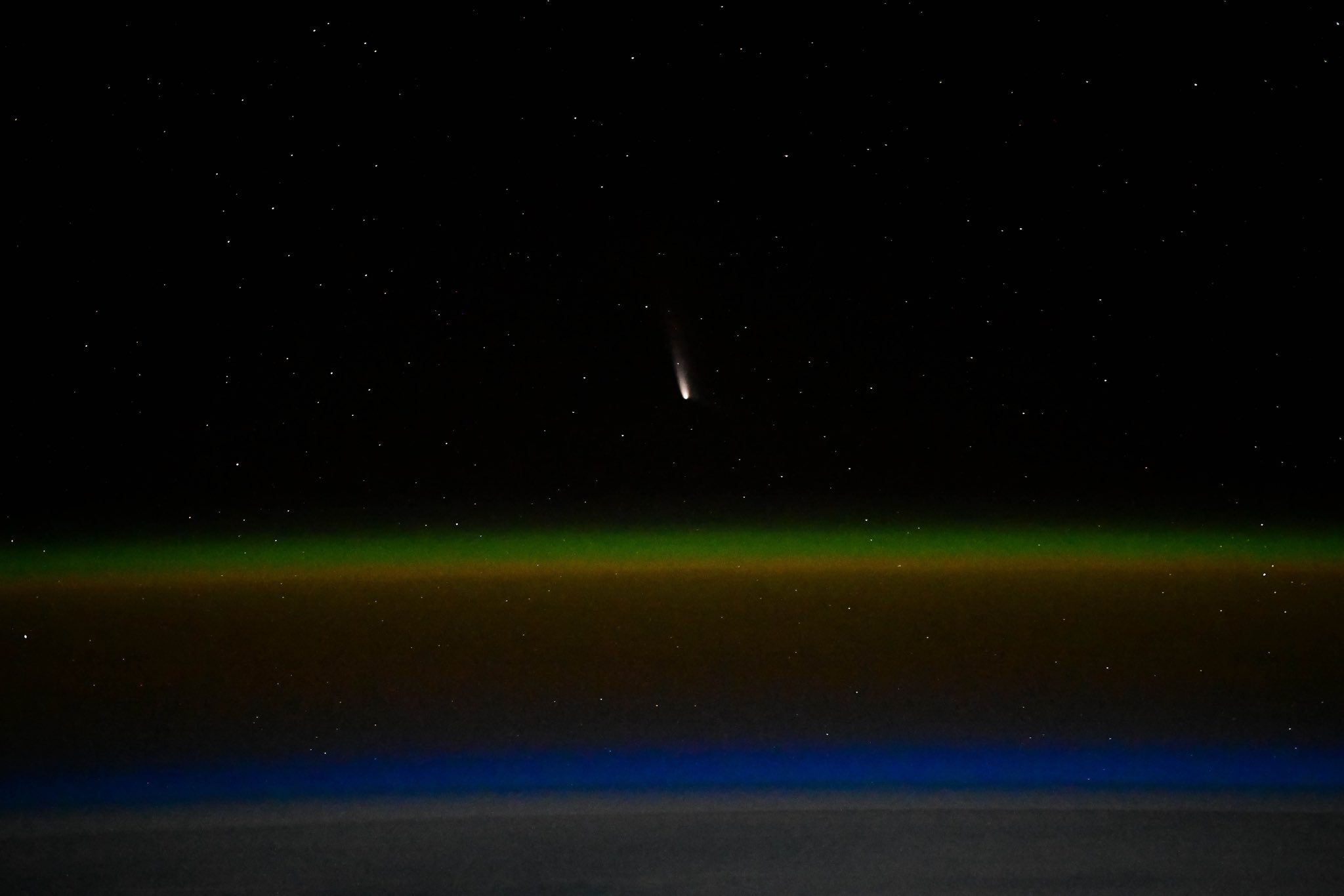Two NASA astronauts aboard the International Space Station (ISS) have been tracking the movement of a comet heading toward the sun and using the opportunity to capture some remarkable photos and footage.
ISS inhabitants Matthew Dominick and Don Pettit — both already renowned for their impressive space-based photographic work — have been monitoring comet C2023-A3 (also known as Tsuchinshan-ATLAS) for the past week or so and sharing their efforts on social media.
Alongside a video (below) posted on Wednesday that features the comet, Dominick wrote: “The comet tail is noticeably longer each day. Pause the video at about 15 seconds … you can see the tail of the comet looks like it is bending. The atmosphere is more dense the closer you get to earth. Changes in the density of the atmosphere change the refractive index and thus make the comet tail appear bent.”
The comet tail is noticeably longer each day. Pause the video at about 15 seconds . . . you can see the tail of the comet looks like it is bending. The atmosphere is more dense the closer you get to earth. Changes in the density of the atmosphere change the refractive index and… pic.twitter.com/vfBBbGeL5x
— Matthew Dominick (@dominickmatthew) September 25, 2024
The video is actually a time-lapse played at eight frames per second, Dominick said, adding that the images were taken with a 200mm lens at a 1/8 sec exposure with about 5 minutes in between shots, “so this time-lapse should be about the same speed as we see it out the window.” The comet’s upward movement in the frame is caused by the camera’s static position and the space station’s orbit of Earth at 17,500 mph.
Fellow ISS astronaut Don Pettit commented on his X account: “It is totally awesome to see a comet from orbit. The perspective of rising through the atmosphere on edge is truly unique from our vantage point. The comet tail is still too dim to see with your eyes, but it is heading towards the sun and growing brighter every day.”

Pettit said that as it’s still too dim to see with the naked eye, Dominick used orbital geometry to figure out where to point their cameras.
Dominick admitted that he, Pettit, and the other astronauts aboard the station were privileged to be able to witness so many astonishing events from their unique position in orbit, writing in a post: “We were discussing the other day how lucky and grateful we are to have seen amazing aurora, a solar eclipse, and a comet in a single trip to the ISS.”
Comet Tsuchinshan-ATLAS is also visible in the morning sky to folks in Australia and New Zealand. If it does indeed become brighter in the coming days, then the viewing possibilities with the naked eye will expand for people all around the world.



